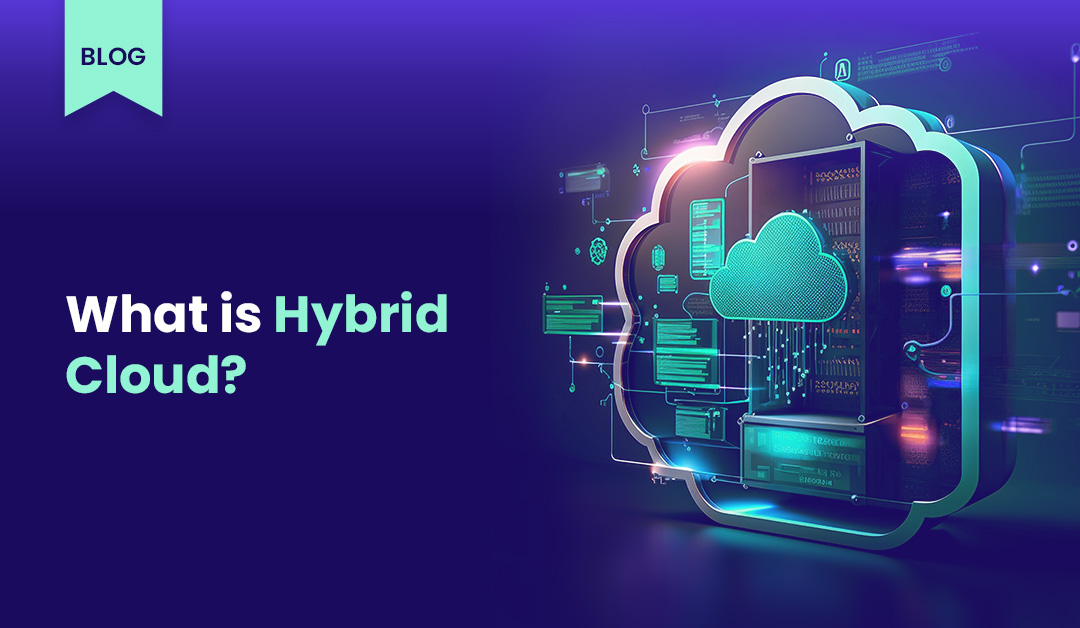What is a Hybrid Cloud?
Understanding the Hybrid Cloud In today’s digitally transformed landscape, a scalable infrastructure is crucial and a hybrid IT model becomes essential. As businesses evolve and adapt to the rapidly changing technological environment, the need for a flexible, efficient, and cost-effective hybrid cloud strategy becomes paramount. This is where the concept of hybrid IT infrastructure comes into […]
Author
Date
Category
All Categories
- AI-powered security
- Attacks & Threats
- Cybersecurity
- Hybrid Cloud
- Network
- Network Firewall
- Network Protection
- News
- Remote Workforce
- Security
- Zero Trust
Contents
Popular Posts
Product
Join the Newsletter

Understanding the Hybrid Cloud
In today’s digitally transformed landscape, a scalable infrastructure is crucial and a hybrid IT model becomes essential. As businesses evolve and adapt to the rapidly changing technological environment, the need for a flexible, efficient, and cost-effective hybrid cloud strategy becomes paramount. This is where the concept of hybrid IT infrastructure comes into play, offering hybrid cloud solutions for cost and cloud optimization.
Unveiling the Essence of Hybrid Cloud
The hybrid cloud model is a blend of public and private cloud services, where the two platforms are integrated to perform distinct functions within the same organization. The hybrid cloud architecture is designed to allow for seamless data and application interoperability between the platforms. The combination of public and private clouds offers businesses the flexibility to scale their IT infrastructure, keeping sensitive data protected in a private cloud while leveraging the robust computational power of a public cloud.
Hybrid Cloud – The Analogy
Think of a hybrid cloud as a hybrid car, a blend of two different technologies: a gasoline engine and electric power. Each operates differently, but when combined, they result in a vehicle that’s more efficient than a gasoline-only vehicle and more powerful than an all-electric one. Similarly, hybrid cloud architecture combines the advantages of both public and private clouds, resulting in a robust, scalable, and cost-efficient IT infrastructure.
The Mechanics of a Hybrid Cloud
The hybrid cloud model involves the deployment of workloads across both private and public cloud environments. Businesses can move their workloads and data between the two as computing needs and costs change, offering them greater flexibility and more data deployment options. A typical hybrid cloud setup might involve applications deployed in a traditional local data center, applications and data stores deployed to a public cloud provider, and services hosted by Platform-as-a-Service (PaaS) and Software-as-a-Service (SaaS) providers.
Navigating Hybrid Cloud Computing
Hybrid cloud architectures are a dynamic mix of on-premise hybrid cloud, third-party public cloud services, on premise infrastructure, and edge computing devices, all orchestrated to work together. It’s crucial to understand that the hybrid network between these hybrid cloud platforms is key to making a successful hybrid deployment. The hybrid connectivity in this hybrid cloud network ensures secure connectivity and efficient cloud migration hybrid cloud effective.
Types of Environments in Hybrid Cloud
There are various environments that can be combined to form a hybrid cloud:
-
Public cloud: A cloud service run by an external vendor that includes servers in one or more data centers. Public clouds are shared by multiple organizations.
-
On-premise private cloud: A data center dedicated to one company. The servers in a private cloud aren’t shared by anyone else’s software, files, or data.
-
Hosted private cloud: Similar to an on-premise private cloud, but the servers are hosted and maintained by a third-party provider in one or more remote data centers.
-
On-premise (legacy): Organizations using this model follow the classic practice of purchasing software licenses, installing and maintaining hardware on their premises, and installing software locally on employee computers.
Hybrid Cloud vs Multi-Cloud
While both hybrid cloud and multi-cloud involve the use of multiple cloud environments, they differ in their composition. A multi-cloud deployment combines multiple public clouds, while a hybrid cloud combines a public cloud with another type of environment.
Hybrid Cloud Networking Essentials
For a hybrid cloud to function effectively, the connection between the distinct cloud environments is crucial. Public clouds, private clouds, and on-premises infrastructure can connect through various means, including Virtual Private Networks (VPNs) and Wide Area Networks (WANs). Without a working connection, an organization is merely running separate cloud environments, missing out on the benefits of hybrid cloud deployments.
Benefits and Solutions of Hybrid Cloud
The hybrid cloud model offers a multitude of advantages for businesses, including:
-
Flexibility: Hybrid clouds allow businesses to switch between different styles of cloud deployment easily.
-
Cost savings: By moving some operations to a public cloud, organizations can significantly reduce the costs associated with maintaining an internal data center.
-
Scalability: Public cloud resources can be leveraged to meet periods of high demand, ensuring seamless operations.
-
Increased security: Sensitive data can be kept on-premise, giving companies more control over their security measures.
However, it’s also essential to note the potential drawbacks of a hybrid cloud model, such as a greater attack surface due to increased network complexity and the challenges of securing multiple cloud environments.
In conclusion, the hybrid cloud model offers a promising solution for businesses looking to optimize their IT infrastructure, offering a balance between cost, flexibility, and security. By understanding its benefits and potential challenges, organizations can leverage this model to drive their digital transformation efforts.
Timus Networks’ SASE solution that combines zero trust network access with a dedicated cloud gateway that acts as a security buffer and a single point of entry to a company’s hybrid cloud environment is perfectly suited to the needs of securing an organization’s hybrid cloud environment.Timus provides inter-site connectivity between company resources via IPSec tunnels from the dedicated gateway.
Get Started with Timus
Zero Trust. Adaptive Cloud Firewall. Secure Remote Access. In one.
